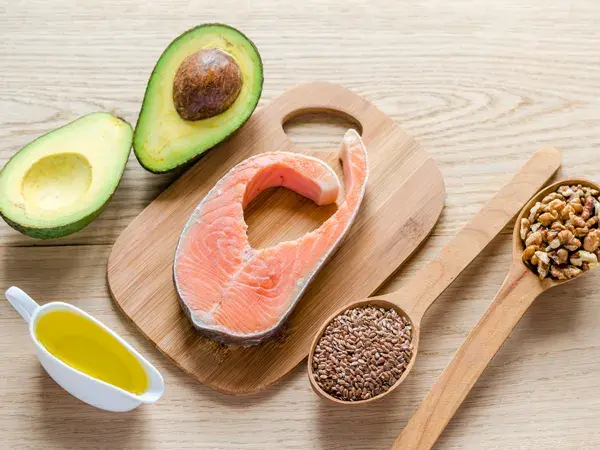Good fat? Bad fat? Yes to some fat, or no to all fat? It may sound like a Dr. Seuss book, but in my role as a Registered Dietitian, I talk to many people who are thoroughly confused by dietary fats. If you fall in this category, you’re in good company!
Depending on which magazine you pick up, blog you scroll through, or even medical professional you talk to, you might hear conflicting opinions regarding dietary fats. I’d like to provide clarity with some simple facts.
First, let's start with the basic truth that your body needs fat. In fact, about 20-30% of your calorie intake should be made up of fat. Your body uses it for energy and to support cell growth. Fat allows your body to absorb fat-soluble vitamins, and essential fatty acids are necessary for brain and eye development.
The second truth is that there are different types of dietary fats. Simply put, not all fats are created equal!
The three basic categories are Saturated Fats, Unsaturated Fats and Trans Fats.
- Saturated fats are primarily found in animal products such as red meat, poultry and dairy. There are also some plant sources that provide saturated fats such as coconut oil and palm oil. Our body does use saturated fat, but it is able to make enough on its own. A diet that is high in saturated fat has been linked to higher cholesterol levels and increased risk for heart disease and stroke.
- Unsaturated fats are divided into monounsaturated and polyunsaturated. Monounsaturated fats are primarily found in plant sources and oils. Olive oil, peanut oil, avocados, nuts, and seeds are examples of good sources. Monounsaturated fats have shown to produce positive effects on overall health, such as lowering cholesterol and managing blood sugar.
Polyunsaturated fats are essential fatty acids. Your body requires these fats but can't produce them on its own. Corn oil, safflower oil, and sunflower oil are some examples. More widely known are omega-3 fatty acids.
Omega-3 fatty acids have been shown to improve overall health—lowering cholesterol, preventing heart disease and stroke, and lowering blood pressure. Some omega-3 fatty acids are found in plant sources such as walnuts, flaxseed, chia, and other seeds and nuts. Other important omega-3 fatty acids are exclusively found in fish and fish oil. - Trans fats are most widely found in processed or packaged food. They are created through a food process called hydrogenation, where healthy oils are turned into a solid, which allows them to have a longer shelf life. These fats have no nutritional benefit and can raise cholesterol levels and increase risk for heart disease. You can identify these in ingredient lists as "partially hydrogenated oil."
Now, I’d like to offer six recommendations on how to include fat in your diet:
- Replace unhealthy fats with healthier fats. Because fats are high in calories (9 calories per 1 gram of fat), don't just add healthy fat to your diet. Instead, subtract some of the unhealthy fats and replace with healthier fats.
- Choose smaller portions and leaner cuts of meats. Remember that 3-4 ounces is considered to be 1 serving of chicken, fish or red meat.
- Eat fatty fish three times a week. Salmon, tuna, mackerel, halibut, and sardines are great options.
- Eliminate trans fats. Read the ingredient list to identify these culprits!
- Select reduced fat dairy products. If you do decide to continue consuming whole milk products, use sparingly or monitor your serving sizes to assure you aren't overdoing it.
- Consume more plant-based foods. As a whole, they provide us with essential and healthy fats, vitamins, minerals and antioxidants necessary for healthy living. So make nuts, nut butters, plant based oils, avocados, and seeds a regular part of your diet.
Establish healthy habits with the Y
Hungry for more? Get more information on YMCA memberships and health and fitness programs at your local YMCA fitness center near you.

